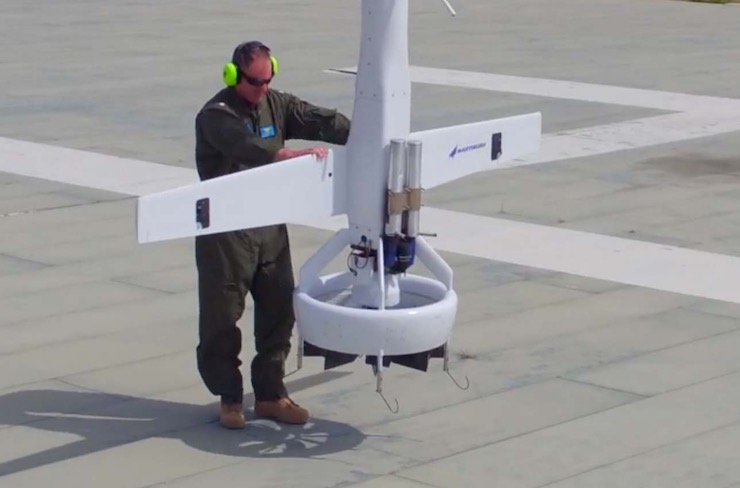
© Martin UAV
Using drones for military operations is not a new concept. Military organizations were the first groups to utilize widespread drone programs. For many around the world, when they hear about drones, they immediately think of those used by the military. In the early 1990’s, the world was fully introduced to the capabilities of drones because of the Gulf War. Since then the United States government has spent billions on drone development and deployment. The most well known of these are the Predator and Reaper class drones used by the United States Air Force. In 2002, after several iterations, the United States Army began using the AAI RQ-7 Shadow. Also used by the Australian, Italian, and Swedish Armies, the Shadow is a drone that performs reconnaissance and surveillance missions.
The Shadow is launched from a runway by a pneumatic catapult and then is recovered in landing by arresting gear, much like how fighter jets on an aircraft carrier are stopped. It looks almost like a sleek plane with a 20’4″ wingspan and an inverted V tail. The Shadow weighs 185.2lbs, has a range of 67.7miles, and a top speed of 126mph. It has an internal Wankel engine, that is unfortunately very loud. By 2017 the US Army had flown the Shadow over 200,000 times, and though it has been a useful tool the army has been looking for a replacement for it for some time now.
The primary reason the army is looking to replace the Shadow is that it is such a noisy drone. When approaching enemy territory, it makes itself well known. When enemy forces know a drone is coming to collect intel, it is a compromised mission. Therefore, the army has only been able to use the Shadow for reconnaissance and surveillance missions at a distance that is not entirely ideal. The army is also looking to find a drone that does not require so much runway space for takeoff and landing. In 2004, the US Army began looking towards Future Vertical Lift (FVL) for unmanned operations. As with many military developments, several contractors are enlisted to develop models for testing. These models will be tested by five separate brigades within the US Army.
The goal for the new FVL drone will be to increase tactical maneuverability, reach, lethality, and stealth. In March of 2020, the 1st Infantry Division at Fort Riley, Kansas received the first of these drones to begin assessing. Built by Arcturus UAV, the Jump 20 is 9’5″ long, has an 18’6″ wingspan, and weighs 210lbs. It has a 17 hour flight time at a speed of around 82 mph. It can be autonomously launched and landed vertically while in a horizontal position, so there is no need for a runway. This means that it can be used and recovered from virtually any place, regardless of the environmental circumstance. Most importantly, it has a reduced flight noise system. While taking off or landing, the Jump 20 still has a loud hum, but once airborne that hum is greatly reduced, posing it to be a game changing tactical tool.
Meanwhile, the 101st Airborne Division at Fort Campbell, Kentucky has also been testing out an FVL drone. The V-BAT built by Martin UAV lifts vertically while standing upright on its tail end like a rocket ship. The fact that the V-BAT stands upright to take off and land mean it is a great space saver, it can be launched from areas with minimal space like a ship deck or even the edge of a cliff. Once airborne the drone transitions to a standard fixed wing aircraft flight. At 8′ long with a 9′ wingspan, and weighing only 88 lbs, the V-BAT is small and easy to transport. However, the soldiers testing it, claim that it performs much like the Shadow drones they are trying to replace.
These are just 2 of the 5 FVL drone options being tested by the army. More tests are scheduled to commence within the next few months at the remaining 3 brigade bases. Though the army has been looking into FVL capabilities for several years it has been a slow journey up until now. The rate at which they are conducting these trials could mean that a stealthily quiet FVL drone will soon be replacing the AAI RQ-7 Shadow.



